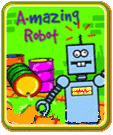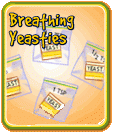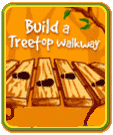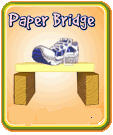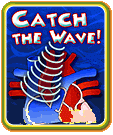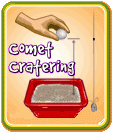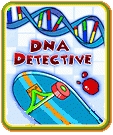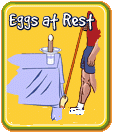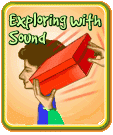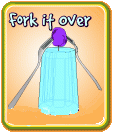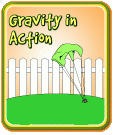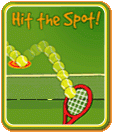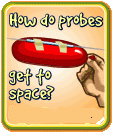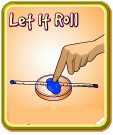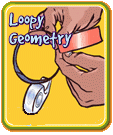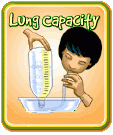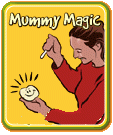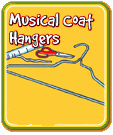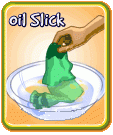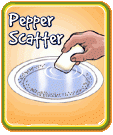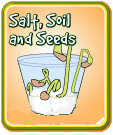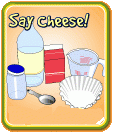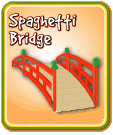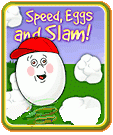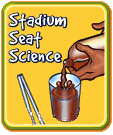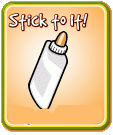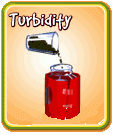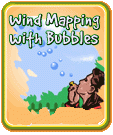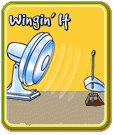Kids Experiments
Idiomas
|
How A-Mazing are you? Program your robot to pick up and dispose of some toxic waste using as few simple commands as possible.
|
How many coins can you float? Experiment with aluminum foil in a boat and a ball.
Contribuição de: Reuben H. Fleet Science Center
|
|
Do you have animal attraction? You can right in your own back yard with some craft supplies, your imagination and a little help from Mother Nature.
Contribuição de: Chicago Botanic Garden
|
Does yeast breathe? Find out by watching plastic bags filled with yeast, warm water and different amounts of sugar.
|
|
Build and test a model of a rainforest canopy walkway. Rainforest researchers must consider materials, transportation, and cost so they don't damage the fragile canopy environment as they study it.
Contribuição de: JASON Foundation for Education
|
Make a bridge out of a folded piece of paper and two blocks. Test your structure by stacking coins (and other things) on it. How much weight can your bridge support before it crashes?
Contribuição de: New York Hall of Science
|
|
Did you know you can use sound waves to see things? Submarines use sonar to 'see' where they're going in dark waters by interpreting the reflection of sound waves off things in the ocean. Ultrasound is another...
Contribuição de: Science Museum, Japan Science Foundation
|
Make impact craters with marbles (or rocks) in a container of flour. Find out what you can tell about your "comets" by the craters they make.
Contribuição de: JASON Foundation for Education
|
|
Can you solve the crime? Find out how DNA profiling can make sense of a crime scene and help I.D. a culprit from a list of suspects. Learn the DNA Basics, investigate the Crime Scene and experiment in the Lab and become a...
Contribuição de: Explore @ Bristol
|
Will you scramble eggs? Discover how an egg at rest stays at rest with an egg, a broom, an empty toilet paper roll, a pie pan and a glass of water.
Contribuição de: St. Louis Science Center
|
|
Create a maze inside a shoebox with blocks of wood. Have a friend figure out where the blocks are by listening as a marble rolls inside the box. Using energy waves like sound, to determine the position of an object is called...
Contribuição de: JASON Foundation for Education
|
Amaze your friends by balancing forks on a toothpick and "fork it over" the center of gravity!
Contribuição de: Reuben H. Fleet Science Center
|
|
You can get it with a glass of water, some wire, conductors and a battery!
Contribuição de: Discovery Centre
|
Make a parachute! Discover gravity in action with some plastic bags, string and small stones.
Contribuição de: COSI Columbus
|
|
Make a hilarious honker! Fasten a piece of string through a hole in the end of a plastic cup and discover the hilarious sounds you can make. Find out how the length, tautness and wetness of the string affect sound vibrations.
Contribuição de: COSI Columbus
|
How's your aim? Find out how physics can make or break your game with a tennis racket, ball and paper targets and see if you can hit the spot!
Contribuição de: The Franklin Institute
|
|
Build a rocket-a blown-up balloon taped to a drinking straw threaded through some string. The rocket follows Newton's Third Law of Motion: Every action produces an equal and opposite reaction.
Contribuição de: www.jason.org
|
Show your Kool Colors! Discover the chemistry of tie-dyeing with cotton fabric, Kool-Aid and vinegar.
Contribuição de: Oregon Museum of Science and Industry
|
|
How easy is it to let it roll? Find out with two jar lids, some marbles, and a straw handle!
|
Get loopy and amaze your friends! Morph circles into other shapes with the magic of geometry, paper loops, some tape and a scissors.
Contribuição de: Fort Worth Museum of Science and History
|
|
Find out how much hot air you have! Measure your lung capacity-how much air your lungs can hold-by making a spirometer out of a plastic bottle, a pan of water, and some flexible tubing.
Contribuição de: COSI Columbus
|
Make your own mummy! Use a combination of salts to transform an apple into a mummy.
Contribuição de: Putnam Museum of History and Natural Science
|
|
Can you hear better with your fingers in your ears? Find out with a coat hanger and some string!
|
Create an oil slick with vegetable oil in a bowl of water. Oil and water make an immiscible solution-the elements never mix and will always separate into layers. Find the best method to clean up the oil.
Contribuição de: COSI
|
|
Think a penny can?t do much anymore? Think again - and experiment with pennies, vinegar and a metal object.
Contribuição de: Oregon Museum of Science and Industry
|
Break the tension! Use water, pepper and some soap to discover the wonders of surface tension.
|
|
What seed is worth its salt? Discover how the salt in soil affects plant growth with a few seeds, some cotton and salt.
|
Will it be fun or fry? Find out how important sunscreens are and save your skin.
|
|
What makes cheese so cheesy? Find out with some milk, vinegar and a coffee filter!
Contribuição de: New York Hall of Science
|
Don't scream for ice cream -- make your own with milk, sugar, flavoring and some 'salt-water' ice.
Contribuição de: Lied Discovery Children's Museum
|
|
Do you have guts? Dissect a perch and a crayfish and find out how much guts they have too!
Contribuição de: Science Museum of Virginia
|
Do you smell like a shark? Find out what your nose knows by diluting something smelly in different concentrations using six jars, some food coloring and perfume.
Contribuição de: Nauticus, The National Maritime Center
|
|
Play with your food! How strong is your spaghetti structure? Find out with some marshmallows, raw spaghetti, raw linguine and some coins.
Contribuição de: Sciencenter
|
Save the egg! Protect your 'passenger' from Newton's First Law with an egg, a toy truck, a brick, cotton balls, rubber bands and a Styrofoam cup.
|
|
Take the two-straw challenge as you wait for the game to start! Discover how pressure can quench your thirst with a drink and two straws.
|
What do you get when you mix milk curds and baking soda? Try this experiment and find out if you stick to it!
Contribuição de: Oregon Museum of Science and Industry
|
|
Investigate turbidity in a jar-measure the light intensity of a jar of water using a flashlight and some black construction paper. As the turbidity increases, the murkier the water becomes and less light is able to shine...
Contribuição de: www.jason.org
|
Blow like the wind! Discover the wacky world of wind direction with some bubbles, a map and a keen eye.
Contribuição de: Fort Worth Museum of Science and History
|
|
How high can you fly? Build and test an airplane wing with some paper, cardboard, skewers, and a fan.
Contribuição de: Oregon Museum of Science and Industry
|

